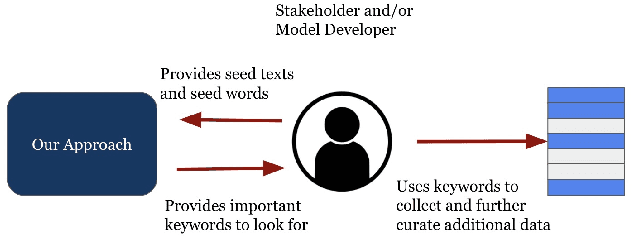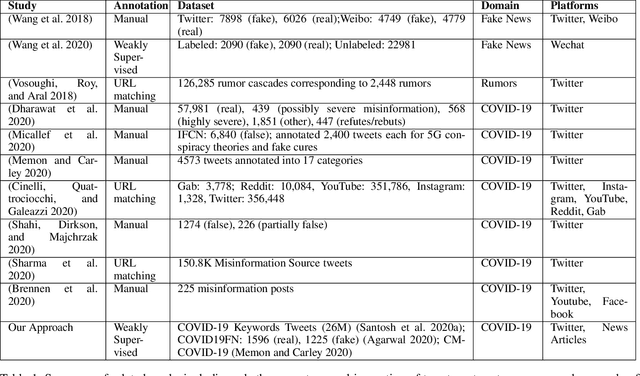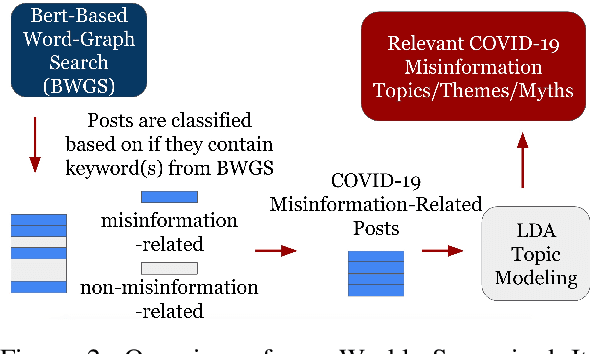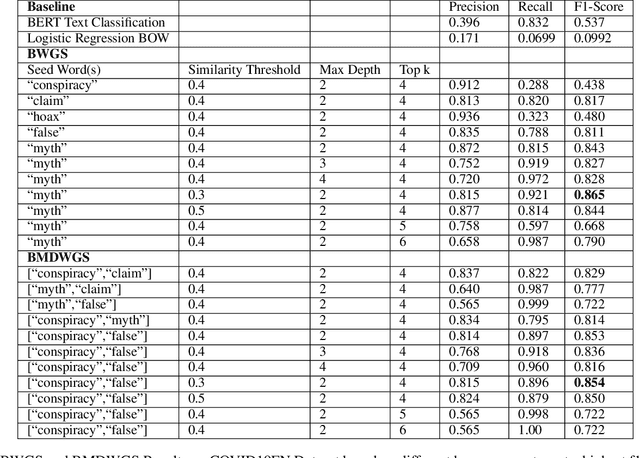Harry Wang
Using Language Models to Detect Alarming Student Responses
May 12, 2023



Abstract:This article details the advances made to a system that uses artificial intelligence to identify alarming student responses. This system is built into our assessment platform to assess whether a student's response indicates they are a threat to themselves or others. Such responses may include details concerning threats of violence, severe depression, suicide risks, and descriptions of abuse. Driven by advances in natural language processing, the latest model is a fine-tuned language model trained on a large corpus consisting of student responses and supplementary texts. We demonstrate that the use of a language model delivers a substantial improvement in accuracy over the previous iterations of this system.
A Weakly-Supervised Iterative Graph-Based Approach to Retrieve COVID-19 Misinformation Topics
May 19, 2022



Abstract:The COVID-19 pandemic has been accompanied by an `infodemic' -- of accurate and inaccurate health information across social media. Detecting misinformation amidst dynamically changing information landscape is challenging; identifying relevant keywords and posts is arduous due to the large amount of human effort required to inspect the content and sources of posts. We aim to reduce the resource cost of this process by introducing a weakly-supervised iterative graph-based approach to detect keywords, topics, and themes related to misinformation, with a focus on COVID-19. Our approach can successfully detect specific topics from general misinformation-related seed words in a few seed texts. Our approach utilizes the BERT-based Word Graph Search (BWGS) algorithm that builds on context-based neural network embeddings for retrieving misinformation-related posts. We utilize Latent Dirichlet Allocation (LDA) topic modeling for obtaining misinformation-related themes from the texts returned by BWGS. Furthermore, we propose the BERT-based Multi-directional Word Graph Search (BMDWGS) algorithm that utilizes greater starting context information for misinformation extraction. In addition to a qualitative analysis of our approach, our quantitative analyses show that BWGS and BMDWGS are effective in extracting misinformation-related content compared to common baselines in low data resource settings. Extracting such content is useful for uncovering prevalent misconceptions and concerns and for facilitating precision public health messaging campaigns to improve health behaviors.
 Add to Chrome
Add to Chrome Add to Firefox
Add to Firefox Add to Edge
Add to Edge